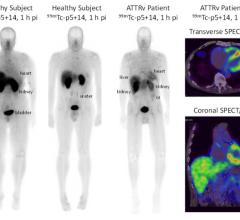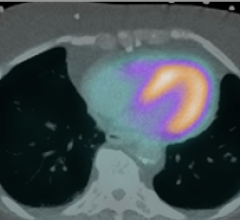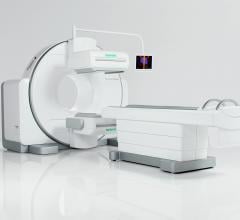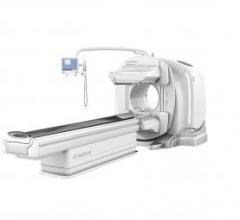

GE Healthcare looks to the future of molecular imaging through improving cost, quality and access by helping clinicians deliver responsible care, both clinically and economically. This includes a focus on positron emission tomography (PET) treatment assessment, reinforced by a portfolio of quantitative imaging tools to help clinicians detect, diagnose and monitor disease earlier, and to evaluate cancer treatment efficacy more quickly.
GE Healthcare has created Q.Suite, a collection of next-generation capabilities designed to further quantitative PET by generating more, consistent standard uptake values readings — and enabling clinicians to assess treatment response more accurately than ever before.
In nuclear medicine, GE will showcase innovative and advanced technology, specifically the Discovery NM/CT 670, designed to improve workflow, dose management, and overall image quality.
The Discovery NM/CT 670 system combines a newly designed SPECT gantry and GE Healthcare’s latest advancements in nuclear medicine detectors with GE Healthcare’s BrightSpeed Elite 16 slice computed tomography (CT), resulting in shorten acquisition times and enabling more convenient patient scheduling in comparison to separate, conventional single photom emission computed tomography (SPECT) and CT exams. With the Discovery NM/CT 670, the imaging time can be reduced from an average of 35 minutes to as little as 16 minutes. After a successful global launch, the system has been selected by 100 sites around the world. The new GE Healthcare Discovery NM630 is engineered to help accommodate more patients than previous generation GE nuclear medicine systems. With its wide bore and table capable of handling patients up to 500 pounds.
Brivo NM615 will make its global debut at RSNA. Brivo NM615, an advanced nuclear medicine gamma camera, is made possible through GE’s innovative Evolution technology. This single head system has the ability to achieve shortened scan times, rivaling a dual head system. Both Discovery systems include SPECT capability that gives doctors the ability to lower injected patient dose by as much as 50 percent of those of standard nuclear medicine scanning protocols, or the potential for patients to spend significantly less time on the table during exams, without compromising image quality.
Also to be showcased:
• Discovery MB750b, a molecular breast imaging system that may assist in assessment and early detection of breast cancer in women who are at high risk for the disease.
• Alcyone technology, adopted by more than 100 leading clinicians worldwide, has become an accepted technology for nuclear cardiology diagnosis. Harnessing four advanced nuclear imaging innovations, Alcyone technology has the ability to reduce scan time and/or injected dose while maintaining image quality. Alcyone technology is available on the Discovery NM 530c.
For more information: www.gehealthcare.com


 June 11, 2024
June 11, 2024 



